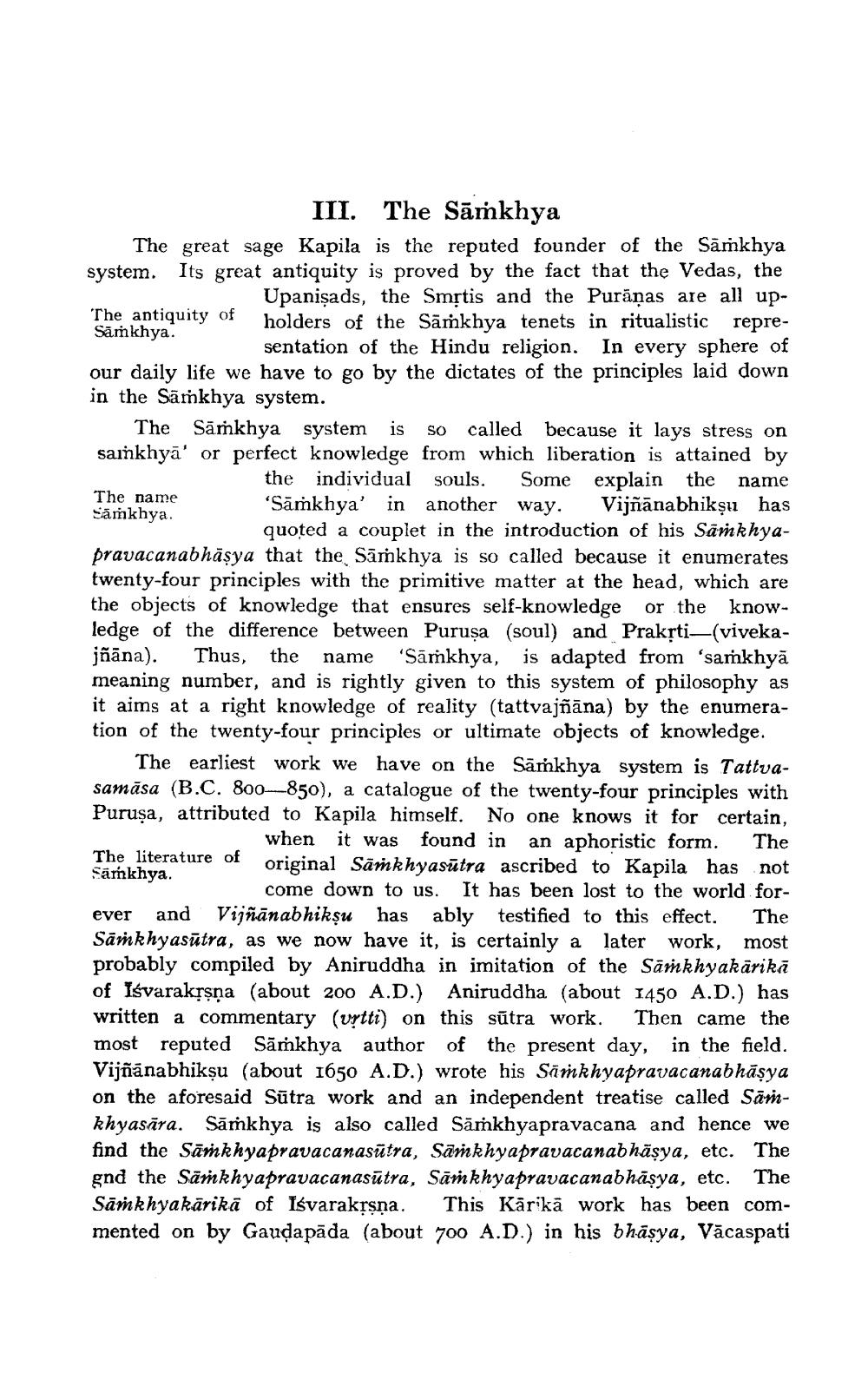________________
III. The Sāṁkhya The great sage Kapila is the reputed founder of the Samkhya system. Its great antiquity is proved by the fact that the Vedas, the
Upanişads, the Smộtis and the Purāņas are all upThe antiquity of
holders of the Sāṁkhya tenets in ritualistic repreSăkhya.
sentation of the Hindu religion. In every sphere of our daily life we have to go by the dictates of the principles laid down in the Samkhya system.
The Sārkhya system is so called because it lays stress on sainkhya' or perfect knowledge from which liberation is attained by
the individual souls. Some explain the name The name
'Sāṁkhya' in another way. Vijñānabhikṣı has Samkhya.
quoted a couplet in the introduction of his Sāmkhyapravacanabhāsya that the Sāṁkhya is so called because it enumerates twenty-four principles with the primitive matter at the head, which are the objects of knowledge that ensures self-knowledge or the knowledge of the difference between Purusa (soul) and Prakrti—(vivek jñāna). Thus, the name 'Samkhya, is adapted from 'samkhyā meaning number, and is rightly given to this system of philosophy as it aims at a right knowledge of reality (tattvajñāna) by the enumeration of the twenty-four principles or ultimate objects of knowledge.
The earliest work we have on the Sāṁkhya system is Tattvasamāsa (B.C. 800-850), a catalogue of the twenty-four principles with Puruşa, attributed to Kapila himself. No one knows it for certain,
when it was found in an aphoristic form. The
original Sārkhyasūtra ascribed to Kapila has not Sankhya.
come down to us. It has been lost to the world forever and Vijñānabhikṣu has ably testified to this effect. The Samkhyasūtra, as we now have it, is certainly a later work, most probably compiled by Aniruddha in imitation of the Samkhyakārikā of Isvarakrsna (about 200 A.D.) Aniruddha (about 1450 A.D.) has written a commentary (Urtti) on this sūtra work. Then came the most reputed Sāmkhya author of the present day, in the field. Vijñānabhikṣu (about 1650 A.D.) wrote his Samkhyapravacanabhāşya on the aforesaid Sūtra work and an independent treatise called Samkhyasära. Sāṁkhya is also called Samkhyapravacana and hence we find the Sāmkhyapravacanasūtra, Sarkhyapravacanabhāsya, etc. The gnd the Samkhyapravacanasūtra, Samkhyapravacanabhäsya, etc. The Sākhya kārika of Isvarakrsna. This Kārika work has been commented on by Gaudapāda (about 700 A.D.) in his bhāsya, Vācaspati




